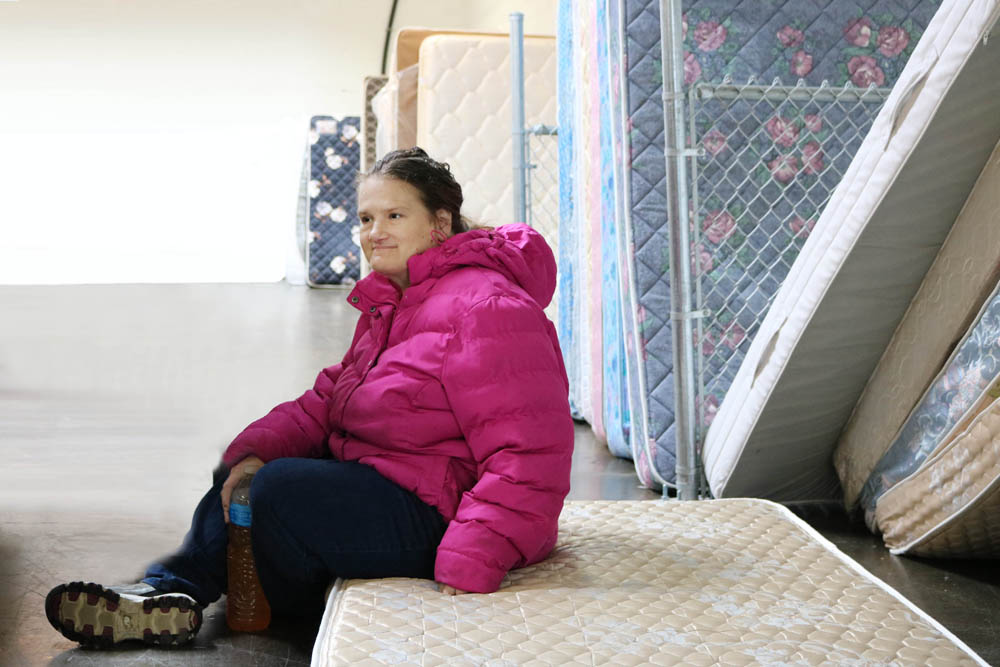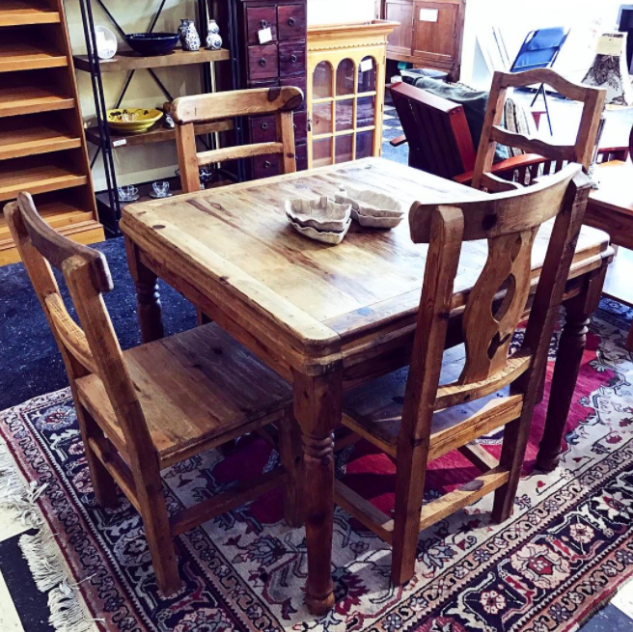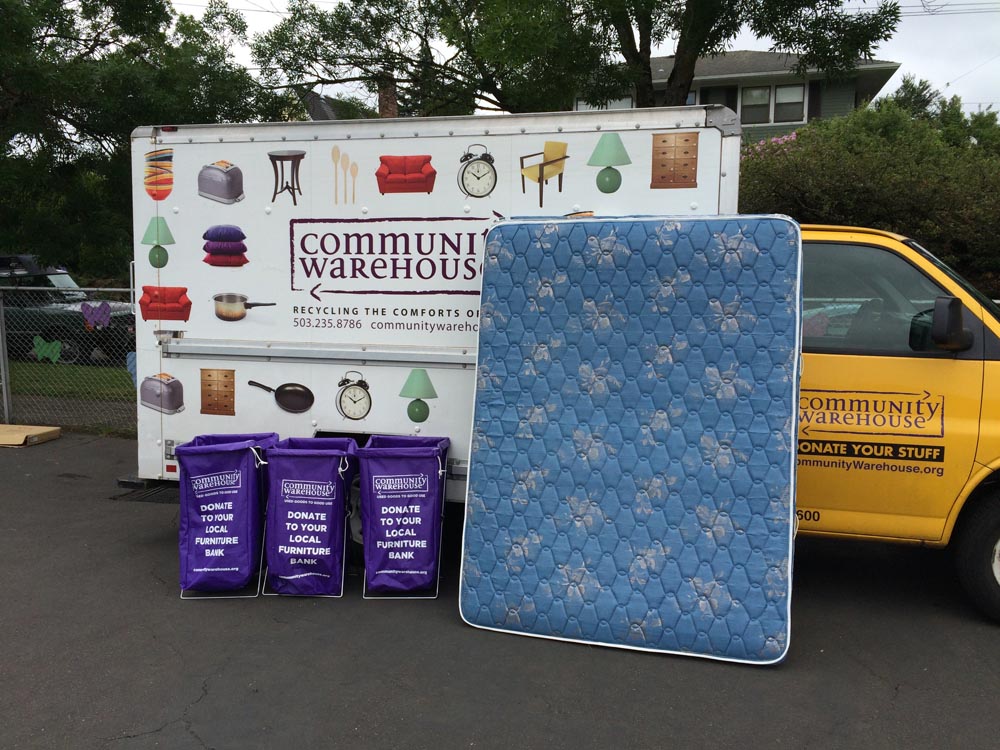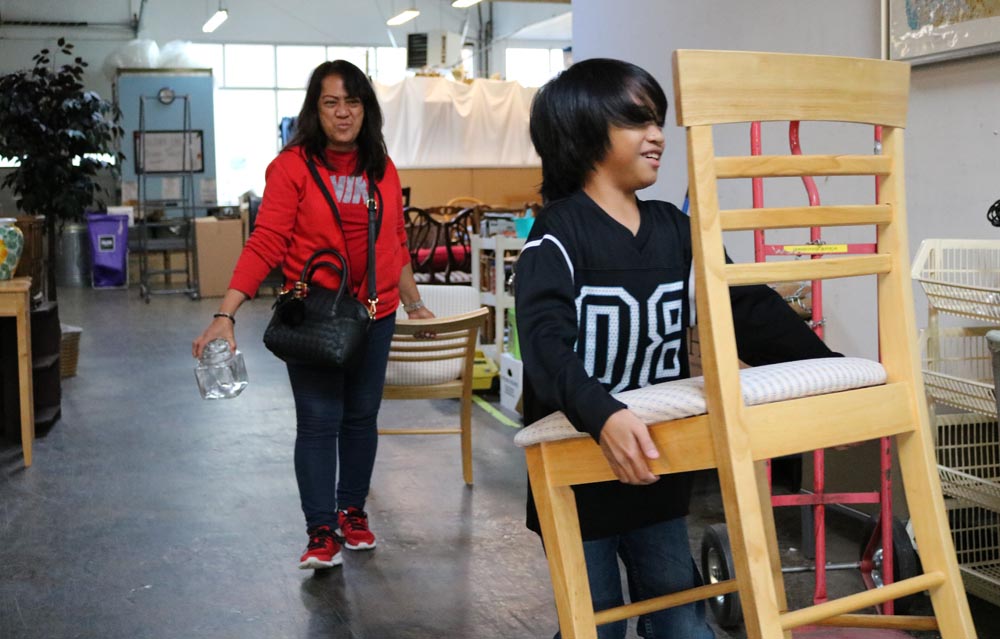Written by Desmond Fuller
Spring cleaning: It’s an annual chore we tackle every year, lifting the garage door to let the sunshine illuminate all of our stuff that has collected dust. It’s been months since we’ve seen the garden tools, the camping gear, and the gifted blender we never even took out of the box. The first days of good weather give us a sense of renewal and ambition that manifests in dusting off our dormant projects, hatching plans for summer fun and pulling boxes of old stuff, into the driveway to be sold, donated or junked. How much of that stuff is destined for the landfill, and how much still has years left of use?
Every day at Community Warehouse, we see the latent utility of donated goods passed on to new owners and put to good use for potentially years to come. Each new item produced is embodied with the energy it took to manufacture it. The longer an item stays in use, the less energy is wasted in its production. Prolonging an item’s lifespan through reuse is essential to fostering sustainable practices in our society while reducing the demand to produce more.
Contrary to popular belief, the manufacturing of new products actually has a greater negative environmental impact than that of landfill waste and processing. The number of landfills in the United States decreased from 7,924 in 1988 to 1,754 in 2007. Existing waste stations have increased capacity and are managed and designed under increasingly strict guidelines. Domestically, pollution from plastic production (a material found in nearly everything we use), accounts for fourteen percent of total national air pollution, according to the EPA Toxic Release Inventory. Once in the landfill, materials like plastics, metals and fabrics can take years to break down, translating to decades of potential reuse left untapped. For example, an estimated twenty million mattresses and boxsprings (amalgams of fabric, plastics and/or wood) end up in the landfill each year. To put it another way, that’s enough beds for the populations of New York City and Mexico City to have a place to sleep.
As one of few donation centers for gently-used mattresses in the greater Portland area, Community Warehouse redistributed over 3,269 mattresses in 2016 to families for further use. The majority of consumers will replace a mattress after five years of use or less. However, the average mattress is good for about ten years of use, making it prime for donation to another person who will extend its value. If a mattress is clean, with no stains or tears, Community Warehouse can pair it with someone in need of a comfy place to sleep. Forty percent of people coming to the Warehouse for furnishing are children needing twin beds. Sometimes a mattress is given out to a family the same day it was donated. How’s that for quick turn around?

Client selecting a mattress at Community Warehouse in Portland.
Keeping goods in circulation through donation and resale also has benefits for the economy, creating opportunities for small businesses via thrift shops and antique stores and online platforms. The Community Warehouse Estate Store is able to provide substantial funding for our furniture bank, based on the demand for things classic, quirky and niche. With everything from furniture to vinyl records, vintage/retro pieces are highly sought after and can be resold for hundreds or thousands of dollars. Who knew your childhood board games or grandparent’s hard wood table was so hip? This proves the potential of goods if they are kept in circulation; they can easily create value beyond what was originally intended upon the assembly line. At the Community Warehouse Estate Store, one person’s trash being another’s treasure could not be more true, as we see countless people hunting for collectible niche items that are donated en masse then sorted and put into the store. https://www.communitywarehouse.org/estate-store/

Beautiful wood table, sold at the Estate Store in Portland.
As our society gradually moves toward more sustainable practices, reuse has and will continue to become an integral part of everyday life. So as the clouds part and the sun shines down on all our accumulated odds and ends, consider what it took to make that frying pan or end table, coffee maker or dresser, and honor the potential it has to be useful for years to come.
It takes a lot of energy to make something so let’s get the most out of it and pass it on to the next person that can do the same.

Community Warehouse – putting your USED GOODS TO GOOD USE every day!


